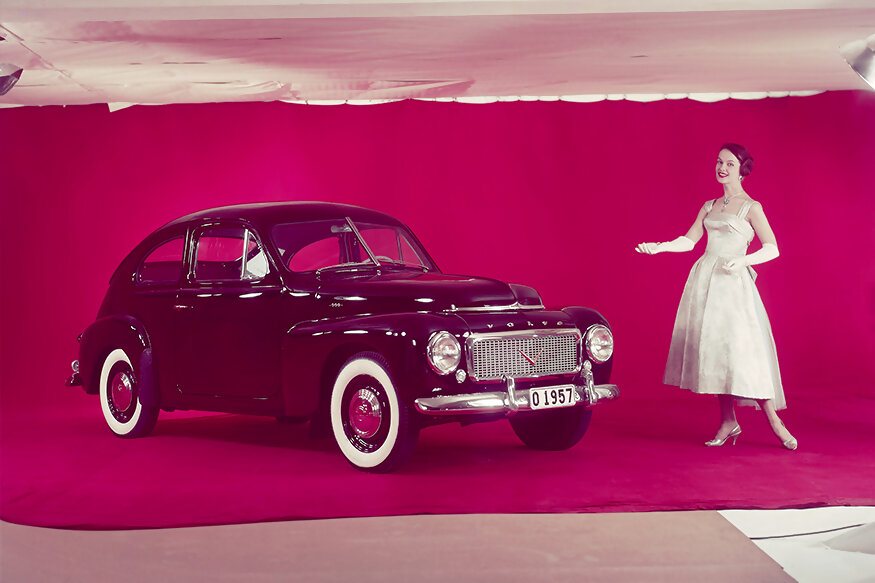
views
When I say Volvo, chances are that you might think of a car that’s safe, one that does not compromise on build quality and keeps the focus on the safety of not only its passengers but also of the pedestrians around it. But how did Volvo become synonymous with safety?
WATCH VIDEO:
THE PAST
To understand how Volvo became synonymous with safety, we need to go back a few years. Actually, make that a lot of years, all the way back to 1944. Have you ever noticed that the glass that is used as a windscreen on cars today does not shatter when broken? That’s because it’s laminated glass and Volvo introduced it in their cars back in 1944.

But the turning point, the defining moment in their story did not happen until the late 50s. The number of cars on roads were rapidly increasing and so were the accidents, most of them being fatal. Enter Nils Bohlin who, with the help of Bengt Odelgard and Per-Olof Weman, came up with an invention – the three-point safety belt.

This was the very seat belt that we use in our cars even today. They were so effective and ahead of their time that if you notice, cars have changed SO much over all these years but what has remained constant are the seat belts which are one of the key safety factors in accidents even today, even in the modern cars.

Volvo made this a standard feature on all their cars in 1959 and then made this design patent open, which in simple words means, they shared this technology with the entire world. That is when Volvo became synonymous with safety.
But they did not stop there, they took this brand identity and really hammered it as their forte over time.


Volvo developed the first rear-facing child seat in 1964 and then went on to make their own ‘booster seats’ in 1978 which helped protect children of all sizes seated at the back from side impacts as well.

In 1991 they introduced a Side Impact Protection System which channelled the force of the impact away from the doors and into the safety cage. In 1994, adding to this even further they also introduced side airbags for the passengers and then went on to make this a standard equipment on all their models all the way back in 1995.
In 1998, they introduced the Whiplash protection system which saved front passengers from injury in case of a crash from the back, saving them from a well, a whiplash.
Jump to 2004 and Volvo has now come out with a Blind Spot Information System which detected vehicle’s that were in the blind spot of the driver with a side-view-mirror-mounted camera and alerted the driver with in-built light. The same year, all Volvos also got the daytime running lights as standard all over the world.
And in 2005, for those who drove a convertible like the Volvo C70, the company came out with door-mounted inflatable curtains.
In 2006, Volvo came out with what they called as Personal Car Communicator or PCC, which allowed for keyless entry and keyless ignition. And also, the key would tell you if the alarm has been activated and with the heartbeat sensors inside the car, it would tell you if someone is inside it as well.
In 2007, 13 years before today and the year when the first Apple iPhone came out, Volvo had come out with Adaptive cruise control on their S80 model. It adapted the cruise control speed according to the car in front, which means it slowed down in case the car in front slowed down and came back to the pre-set speed automatically in case the car finds space once again. On top of that, this system also had collision warning and brake support too!
Just to give you an idea of how much Volvos had improved by this time, every single Volvo since 2009 has got five out of five stars from the European crash test body Euro NCAP. And to give you an idea of how successful Volvo has been, well, it is estimated that over 10 lakh lives across the world have been saved by now all thanks to the three-point seat belt alone. And this is when people are yet to realise that they should belt up all the time, no matter where they are seated inside the car.
Another mind-blowing statistic is from the Volvo XC90. Ever since its launch in 2002, more than 50,000 of these cars have been sold and no one, I repeat no one, be it the driver or the passenger has been killed in the XC90. A stat that is only exclusive to this Volvo.
THE PRESENT
And that brings us to today. While other cars have become so much safer over the years, Volvo still remains to be one of the safest cars on road. They get features that make the car stop on its own if it senses that it is about to crash and even take evasive measures to avoid it altogether. And in case the car does get into a crash, there are enough safety systems to keep you safe.
Volvo is so confident about their cars that they do press events where they crash the car in front of the journalist all over the world and let them see the vehicle themselves post the crash to show that the car has taken minimal damage.
And remember that viral video where a truck came to a halt and narrowly escaped from running over the kid? Well, that truck, was a Volvo and it stopped due to Volvo’s emergency braking system.
And remember this Volvo SUV that went head-on into an oncoming truck? Well, the driver of the XC70 simply walked away.
So yes, Volvo created a unique identity for itself and then went on to build over it. The effect is so much that when you see a Volvo car on road, you may not know what model number it is or which year was it launched, but you will think of it as a safe car. But what about the future?
THE FUTURE
Well, the future begins now. Volvo has already announced that come 2019, all its cars will be electric or hybrid. That’s not it, Volvo also has a mission 2020 which says that by the year 2020 no one should be killed or seriously injured in a new Volvo car. And that is a bold claim, it really is, but if there’s any carmaker that can claim this, then it can only be Volvo.
Then, come 2021, all Volvo cars from that year on will have a top speed limited to 180 km/h. That’s not to say that their cars can’t go faster than that, they already do, but they will put this speed limit in a bid to make cars safer.
The Swedish giant also says that by 2025, 50 per cent of Volvo cars sales’ volume will be fully electric and by then, Volvo will put 1 million, or 10 lakh cars on the roads which would be fully electric.
And these are just features, if you were to look at the concepts that Volvo is working on and how their current generation cars and their cars of the future look from inside as well as the outside, well, it won’t be wrong to say that Volvo will not only be making the safest cars on the road but also the prettiest ones.
So there you have it, that’s the story of Volvo and how they became synonymous with safety, what they are doing today and how do they see their future. So next time when you put on your seat belt, well, that is all thanks to Volvo.















Comments
0 comment